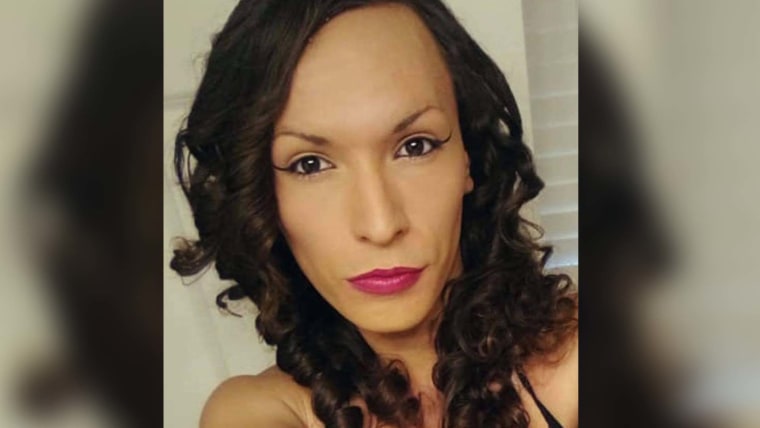Play Episode 4 of the Dateline: Missing in America Podcast below and click here to follow.
Read the transcript here:
Saturday, March 16th, 2019.
It was cool and dry.
A perfectly ordinary day in Tulsa, Oklahoma.
Inside her home on a street of neat lawns and old trees, Pam Smith was waiting for her brother Christian to bring back lunch.
While she waited, she checked Facebook and saw something that would turn her life upside down.
It was a message about her niece Aubrey, nicknamed Shorty.
Pam Smith: “A friend of mine -- who's been my friend for over 30 years -- she messages me and asked me if Shorty's missing. I was like, ‘Not that I'm aware of, why?’ So she sent me a screenshot of one of Aubrey's friends, you know, that made a post on Facebook asking if anybody had seen Shorty, you know, to have her call this number.”
Pam contacted the sheriff's office for Delaware County -- 90 miles from Tulsa.
The county is part of the Cherokee Nation where Aubrey lived.
The sheriff's office confirmed that Aubrey's family had reported her missing.
Pam Smith: “So I started asking questions and the dispatcher asked me how I was related to Aubrey. I said, ‘I'm her auntie.’ I was like, you know, ‘Her mom and I are sisters.’ And she said, ‘Well, you'll have to call your sister and she can give you the details.’”
Pam's brother, Christian Fencer, arriving home, immediately sensed something was off.
Christian Fencer: “I go inside and the look on my sister's face, I just knew something was wrong before she could even say anything. And she said that Shorty was missing and, at that point, I was like ‘OK, she's probably somewhere at a friend's house.’”
But Pam was already making her next phone call.
She called her sister Jennifer, Aubrey's mother, who said she'd last seen Aubrey about a week before.
Pam Smith: “Jennifer said that she woke up about 3:30 in the morning, walked down the hallway to the restroom and she saw Aubrey walking out the side door which goes out to under the carport. And she said she was wearing a black jacket, a black top, a black skirt and black hose -- like knitted hose or something, and black boots.”
Jennifer told Pam that Aubrey said she was going out to meet somebody. She never returned.
Where had she gone?
For Pam and Christian, that would only be the first question in an odyssey through a small town and an ancient culture -- a place where a young woman walked tall before walking into something dark, leaving behind a trail of heartbreak and haunting clues.
I'm Andrea Canning and this is Missing in America, a podcast from Dateline about everyday people who have simply vanished.
Listen closely, because you or someone you know might be able to help find Aubrey to give a family desperately needed answers and solve a mystery that's become intensely personal to the head of the Cherokee Tribal Police, Marshal Shannon Buhl.
Marshal Buhl: “She was a beautiful woman. That's what she was. You could tell she was a beautiful Cherokee woman -- that was proud, that was happy, that had a future. This is a girl with desires and wants and needs. And it's my hope that she found those wants and needs and-- and is living happy and whatever. But if it's not the case, somebody cut that short and we gotta find out: If that happened, who that was.”
Pam Smith's head was spinning. She’d just found out her beloved niece, 25-year-old Aubrey Dameron was missing.

Even more worrying, she learned that Aubrey -- who was epileptic -- had left her medication behind.
Pam and her brother Christian didn't waste any time.
They reached out again to the Delaware County Sheriff's Office and spoke to the police captain in charge of Aubrey's case.
And they got to work. They put out the word on social media asking for volunteers to help search -- a potentially daunting task.
The Cherokee Nation reservation is 7,000 square miles, almost the size of New Jersey.
The reservation is dotted with cities and small towns, but also includes vast rural areas -- home to numerous state parks full of woods and lakes.
But they started in the most logical place -- outside of Aubrey's ranch-style house on the outskirts of Grove, Oklahoma, one of the towns on the reservation.
That's where Aubrey lived with her mom, stepdad and brother. And, as well, from time to time, other family members.
Christian Fencer: “We got a group of about three dozen people together and we searched the entire property, as well as the surrounding areas. We also got some specialists out there, some dive teams who went in two of the ponds in the surrounding area -- and they didn't find anything.”
Back above ground, they hoped technology might provide an idea where Aubrey had gone.
Christian Fencer: “Whenever she left her house, she would walk to the left as she left her driveway. And to the left of her driveway there's other houses, there's people with Ring doorbells -- so they have the cameras on them. So we went over there and we checked those doorbells and Aubrey was nowhere to be found on any of those Ring doorbell video cameras.”
That was a blow. But a major potential clue would turn out to be just steps away.
We were walking down the side of the road where the neighbor who has the Ring doorbell. Across the road from their house was a sock that had what appeared to be blood on it.
The sock was sent off to be tested.
But whatever results came back, both Pam and Christian were already thinking about one thing that might be behind their niece's disappearance.
Pam Smith: “‘It's a hate crime,’ I said. ‘Without a doubt.’”
Why would they think that?
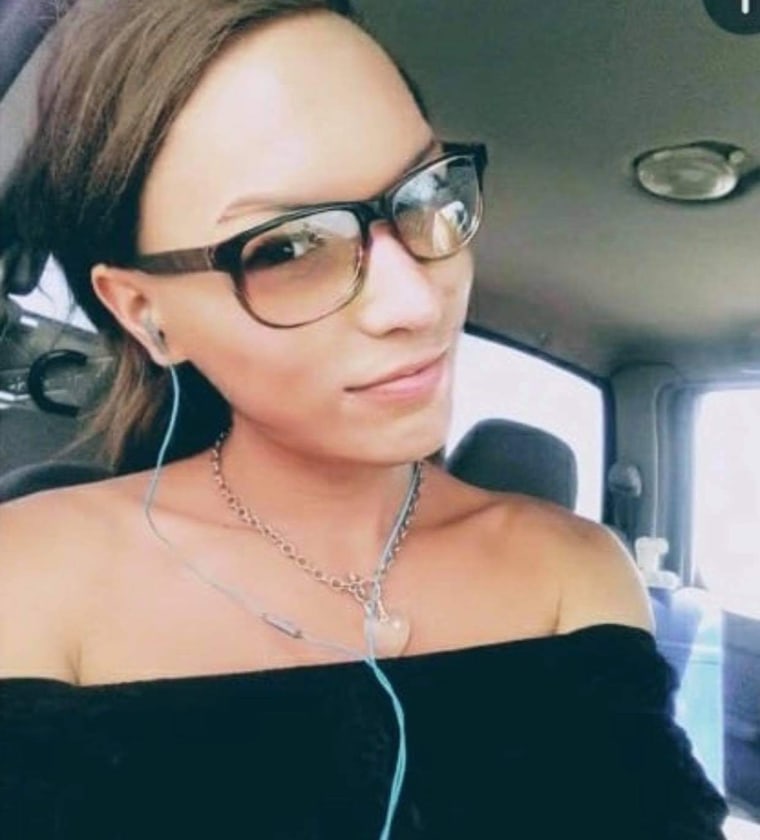
----------------
Twenty-five-year-old Aubrey Dameron was missing.
Her aunt Pam Smith and uncle Christian Fencer said right away, they had a strong suspicion that their niece might be the victim of a hate crime.
To understand why, you need to go back in time.
Though Christian is Aubrey's uncle, at just six months older than Aubrey, they were raised more like siblings.
Brothers, actually.
Because, you see, at birth Aubrey was assigned male.
As little boys, Pam says Aubrey and Christian, too, preferred dolls to toy trucks.
They came out as gay to one another as teenagers, each confessing they had a crush on a boy at their school.
But for Aubrey there was one more step in becoming the person she felt she was meant to be.
Eventually, she told her family that she was transgender.
Andrea Canning: “When Aubrey decided to transition, could you see a big change in her? Was that just like the weight of the world was off of her shoulders?”
Christian Fencer: “Absolutely. I wouldn't say it was like a light switch, but it was a quick transition. I've always thought that she was happy prior to her transition. She was a happy little boy growing up. But whenever I saw her after she’d come out as transgender, she was just thisbeautiful, amazing young woman.”
That amazing young woman took to social media to share her story. Here in one of her posts is Aubrey in her own voice.
Aubrey Dameron: “It's really a blessing, you know, to be able to explain my life and my story to you guys, you know, to have somebody to listen to you when you cry out and, you know, you're not alone.”
There was another part of Aubrey's identity that was important to her, too: being Cherokee.
Andrea Canning: “What do you think was most important to Aubrey about your heritage?”
Christian Fencer: “I think letting people know that she was Native American. Oftentimes, people would assume that she was Caucasian, and if you checked her social media or if you sit down and actually talk to her, she would bring up being Native American within the first five minutes of the conversation. It's just something that she was proud of. She always wore that with, like, a badge of honor.”
Historically, in some Native American tribes, there has been an acknowledgment that there were people who embodied both a male and female spirit. Christian says such people -- known today as “Two Spirit” -- were often greatly revered.
Christian Fencer: “Prior to colonization inside of Indigenous communities, there were members of society who were seen as Two Spirit. They were believed to be able to walk in both the male form and the female form. And they were held in high regards in society. They were held as sacred members because they could walk in both forms -- of men and women.”
This acceptance of gay and transgender life might have been a tradition in some tribes, but today, it's not something embraced by everybody.
Pam says life for Aubrey in Grove, Oklahoma was not easy.
Andrea Canning: “How was she received in the community?”
Pam Smith: “Not very well. Her and Christian dealt with a lot of homophobic slurs and -- and Christian didn't tell me a lot of the details until after Aubrey went missing, about them being chased home from school by people in a vehicle and, you know, them yelling slurs and stuff like that. And when he shared that, it was heartbreaking over again at a different level because I'm, like, I had no idea that they dealt with so much. You know, they just, like, literally would not share everything with me because when I would find out things I would ask Aubrey. I was like, ‘Who is this person or where do they live?’ You know, ‘Let's go take care of this.’ And -- and she would be like, ‘No, Aunt Pam, it's OK,’ she said. ‘I’ll pray for him.’ You know, that was her answer.”
Christian says Aubrey maintained her dignity no matter what.
Christian Fencer: “We would walk into these restaurants or these stores and people would stare. They would stare like they've never seen another human being before. And Aubrey has her head held high and she's walking with the grace of 1,000 debutantes, because that's just how graceful she was whenever she entered a room.”
Christian tells us Aubrey's decision to transition wasn't always appreciated in her own home, either.
Christian Fencer: “It was something that was new to everyone within our community, but it was really new to our family. They didn't really know how to take it. I know that they could have taken a lot better, but they did what they knew how to do and just continued to push forward from there and found acceptance. It took a while. It wasn't overnight. It's something that they worked toward.”
Now, in March of 2019, a few days after Aubrey had disappeared, her aunt and uncle were doing everything in their power to find her. They put the word out on social media, gathered volunteers and searched the area around Aubrey's home on the outskirts of town.
If you're wondering why they were taking so much on themselves -- well, they didn't at first.
As we mentioned, they'd gone to the police, as anybody would. But they say that the investigator in charge of Aubrey's case, Captain Gail Wells of the Delaware County Sheriff's Office seemed dismissive.
Pam Smith: “Captain Wells, when I first spoke with him, he asked me why I thought she was missing. I was like, ‘Well, she can be gullible and naive.’ And he says, ‘Well, we don't believe she's a missing person.’ And I'm like, ‘Why are you saying that?’ Like, ‘I don't understand.’”
Pam says the captain told her Aubrey wasn't actually missing because of her “lifestyle.”
Pam Smith: “I was like, ‘What do you mean her lifestyle?’ I said, ‘Because she's transgender?’You know, ‘She's Indigenous?’ ‘No, no.’ I was like, ‘So what do you mean?’ You know, I said, ‘You’re telling me that my niece’s life isn't worth searching for because of her lifestyle?’ And he was like, ‘We don't have the resources. We don't have the manpower.’ And he goes, ‘But yeah, we just don't believe she's missing.’”
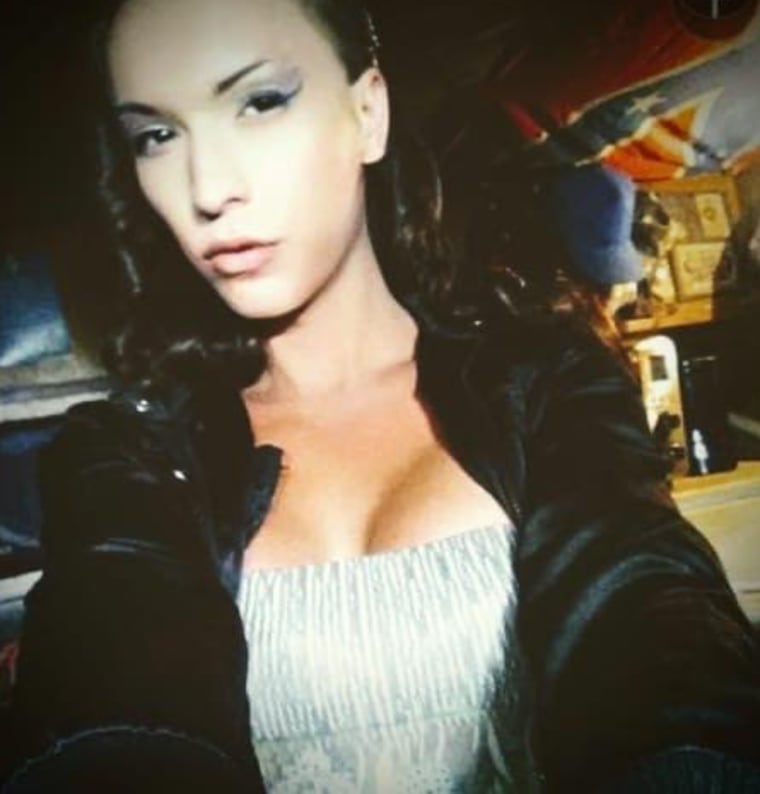
In fact, the sheriff's department told us Aubrey was entered into their system as a missing person as soon as the family reported her disappearance.
But Pam came away outraged that, as she saw it, Captain Wells was blaming Aubrey for whatever might have happened to her.
Lynnette Grey Bull, founder and director of Not Our Native Daughters, dedicated to increasing awareness about missing and murdered Indigenous women, says Native communities are used to a “blame the victim” attitude from law enforcement.
Lynnette Grey Bull: “I've been with families in the actual police department where the mother and the family and the loved ones, the sisters, the brothers have to sit in a law enforcement conference room. And I've heard the investigator -- lead officer -- actually explain that this person is X, Y, Z, or this person has a risky lifestyle of, you know, they're known to party or they're known to hang with this group. And it's really damaging when you're sitting in a law enforcement office -- probably confused and dazed and heartbroken and you're thinking the worst -- and you have an officer who tells you that your daughter or your son has put this upon themselves to be missing and to be in this predicament.”
So now Pam and Christian with, in their minds, not much help coming from law enforcement, were doing whatever they could to find Aubrey with a group of volunteers, one of whom had discovered a sock near Aubrey's house that had what looked like blood on it. The sock was taken to be tested against Aubrey's DNA.
Andrea Canning: “Did anything come from that?”
Pam Smith: “We were informed that it was -- what is the word I'm looking for -- that there was no match.
Andrea Canning: “No match, or inconclusive?”
Pam Smith: “Yeah, inconclusive.”
That may not be quite the end of the sock story. We'll get back to that later.
So there was no physical evidence yet to indicate what might have happened to Aubrey.
But what about possible motives? Who might have wanted to harm her?
A year or two before her disappearance, Aubrey had left town.
Pam and Christian said she lived with a boyfriend in New Mexico, who had taken her to Colorado to have breast augmentation surgery.
When she returned to Oklahoma, they say not everyone appreciated the changes.
Andrea Canning: “Do you believe that her decision to transition somehow fits into this mystery -- that someone was not happy with her choices?”
Christian Fencer: “I believe that's a high possibility. Living in northeast Oklahoma, I've seen the hate that is created there. I mean not just northeast Oklahoma, it's throughout the world -- but specifically in northeast Oklahoma. Because that's where we live, that's what I was exposed to. I can speak on that. I think that her transitioning could have played a part in her disappearance.”
Could someone in Grove who didn't accept her transition have done something to Aubrey?
And what about the boyfriend she'd gone to stay with -- would he have any reason to hurt her?
According to Pam, their relationship was far from healthy.
Pam Smith: “I remember when she came back from New Mexico and she and I talked to -- had a pretty long conversation on the phone in November of 2018. And I asked her -- was like, ‘Are you just in for a visit or you here to stay?’ She goes, ‘I came back to stay.’ And I was like, ‘Oh, OK.’ I was like -- so asked her, you know, ‘What happened?’ She goes, ‘Aunt Pam, it just wasn't a good relationship.’”
Pam says at this point Aubrey started to get emotional.
Pam Smith: “She said, ‘I just needed to get away.’ And -- and then she started crying, saying that she felt like she should go back, like she owed him something. And she said he would tell her that she owed him for, you know, everything that he did for her.”
We tried to contact Aubrey's now ex-boyfriend, but we were unable to find him.
Closer to home, though, there was something else that Pam and Christian found themselves wondering about. Both say that Aubrey's mom, Jennifer, her stepfather and her brother seemed to show little interest in searching for Aubrey.
Andrea Canning: “Do you think her mom knows more than she's letting on?”
Pam Smith: “Absolutely, without a doubt.”
We reached out to Aubrey's mother and brother but received no response.
If Aubrey is the victim of a crime, we know one thing: She is far from alone.
According to the Urban Indian Health Institute, Native American women face rates of violence up to 10 times higher than the national average.
Why would that be? Experts cite reasons including poverty, a lack of education in Indian country, as well as jurisdictional issues that often hinder prosecution of those committing violence against Native Americans.
Lynnette Grey Bull has another reason: Indigenous women, she says, have been seen as disposable for centuries.
Lynnette Grey Bull: “It's actually been researched by professors and universities that the selling, the trading, the exploitation of Indigenous women and children is no new thing. This has actually been something that's been going on since the first settlers came to this country. Indigenous women and children were offered to new settlers as they came into this country by the boatloads, as a sign of that, ‘We have conquered these people. Do what you want with these women and children.’ And we're still facing the violence as Indigenous women till this day. And that's hard to say.”
It was now May. Aubrey Dameron had been missing for almost three months.
And then, one day -- out of the blue -- a stunning tip.
Pam Smith: “One of Aubrey's friends from there in Grove came forward to help. The girl said, ‘If you look from her house up on one of the hills there in town, there's a flagpole up there,’ she says. ‘And if you stand off of my yard by the road and look up there,’ she goes, ‘they say that Aubrey is buried up there.’”
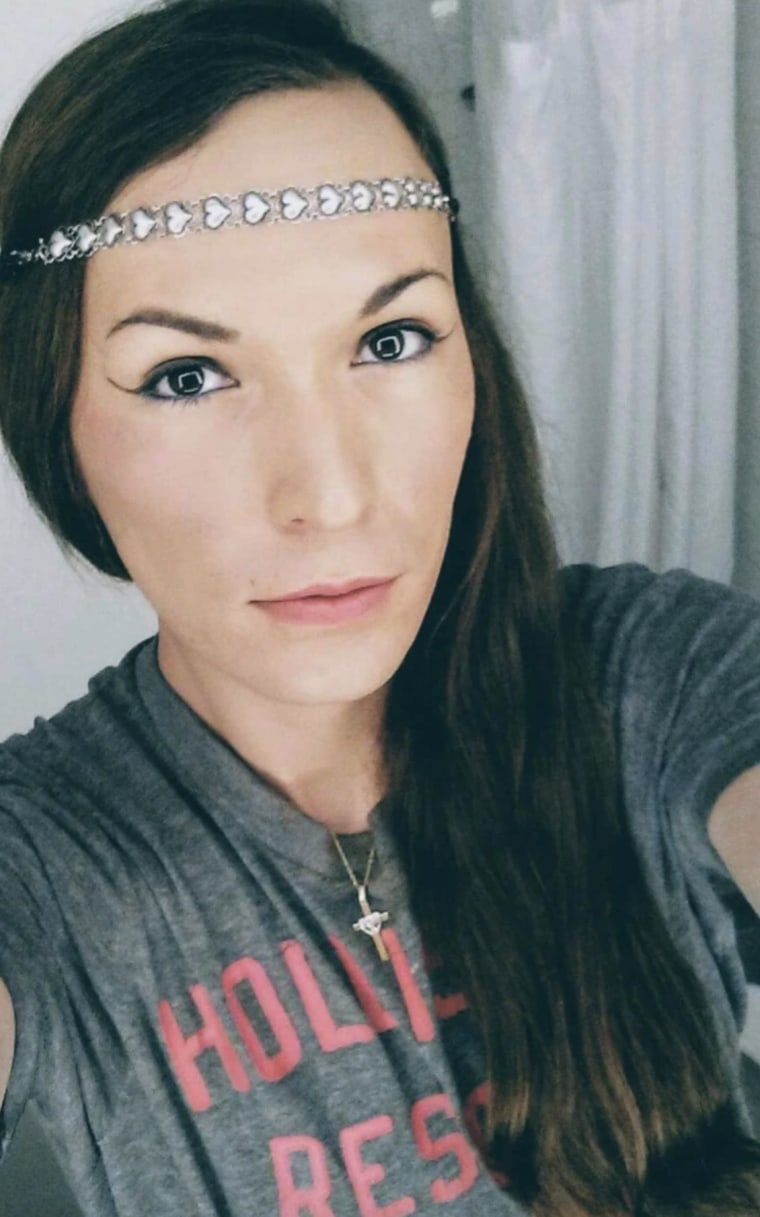
----------------
Pam Smith and Christian Fencer had just gotten a startling tip.
A friend of Aubrey's said she'd heard something alarming about a hill near her house.
Pam Smith: ”She goes, ‘They say that Aubrey is buried up there.”
Searchers headed to the area, 30 miles southwest from Aubrey's home.
Pam Smith: “On the first day of the search, we had a good number of people there and several search and rescue people from different teams. And they went to that hill, you know, where the girl mentioned, and they ran dogs up there and didn't hit on anything. So then everybody came back and they ended up going up on the hill next to it where the water tower’s at.”
This time, Christian says, the dog seemed to have more luck.
Christian Fencer: “One of the dogs hit, and so they brought another dog and that dog hit on the same spot, as well. And they looked at the spot -- and it looked like a shallow grave that was sinking in. And next to it was a black leather jacket which was oddly coincidental to what Aubrey was last seen wearing. So we thought that, ‘OK, this is -- this is huge.’”
But no sooner had they made this potentially enormous discovery, when Pam says they were faced with another setback.
It was Memorial Day weekend and, according to Pam, Captain Wells said the department's forensic anthropologist was unavailable to search the grave-like hole for human remains.
Pam Smith: “He came back and said that the anthropologist couldn't be there until Tuesday. And one of the people that was searching with us -- and I looked at her and I'm like, ‘I didn't know anthropologists took holidays off.’ You know, ‘They always have somebody on call.’ And he said, ‘Well, they just can't get out here until Tuesday.’”
Eventually, the forensic anthropologist did show up.
Andrea Canning: “So they came back. And did they find anything?”
Pam Smith: “They actually found a bone. Captain Wells told us then that the bone was animal --an animal bone.”
Pam says besides the black jacket, investigators discovered another article of clothing nearby.
Pam Smith: “They just said that they took the jacket and a -- like, a basketball jersey that was found just not far from it.”
Andrea Canning: “Were they able to determine if any of the items belonged to Aubrey?”
Pam Smith: “We never got an answer.”
For Pam and Christian, it was yet another blow.
But they continued searching, putting up flyers and speaking to the media -- as Pam did in this report on KJRH, NBC's affiliate in Tulsa.
KJRH report: “A candlelight vigil was held tonight for Aubrey Dameron.”
Pam Smith on KJRH: “People that wonder why we're still looking, you know, if it was your loved one, would you stop?”
They didn't stop.
And then about 16 months after Aubrey vanished, they got some help from 1,200 miles away.
Up until that point, Aubrey's case had belonged to the Delaware County Sheriff's Office.
But in July 2020, the Supreme Court issued a ruling regarding Indian reservations that meant the case would now be investigated by tribal police and the FBI.
Both have many more resources than the sheriff's office. Though the Director of the Cherokee Nation Marshal Service, Shannon Buhl, says his team has had to make up for lost time.
Marshal Buhl: “We have to follow the leads that Delaware County initially got. The investigator that worked Aubrey's case initially is no longer at the sheriff's office. And from everything I've heard, he probably didn't treat this case like I would treat it. He didn't give the due respect, in my opinion, to Aubrey and that's -- that's a loss. It's a loss that now we're playing catch up on maybe a case that, I hate to say it, maybe could have been solved quickly -- but wasn't. So now we're having to play catch up to -- to fit pieces of puzzles, that -- maybe those pieces don't even exist anymore.”
Captain Wells, who has since retired, told us, quote, "I've dealt with persons of all race, creed, religious beliefs and sexual orientation, with the same concern and professionalism throughout my career."
About the forensic anthropologist's delay, he says it had nothing to do with the holiday weekend. He says she was working two homicide sites in different parts of the state and came as quickly as possible.
He also says he never told Aubrey's family that his department didn't have the manpower to conduct searches, though he did say that his agency was small and couldn't handle every tip that came their way.
As for Pam's allegation that he blamed Aubrey's disappearance on her "lifestyle," Captain Wells says her case was considerably more difficult to investigate because he says she was known to use drugs.
And that, he says, meant there were an infinite number of possibilities for coming in contact with, quote, "undesirables" who might have caused Aubrey harm.
With the case now in his hands, Marshall Buhl is doing a lot of things differently, starting with its designation.
The Delaware County Police had called it a missing persons case, while Marshall Buhl is calling it a homicide -- even though he very much hopes Aubrey is alive.
Marshal Buhl: “A lot of agencies will call something that might be a homicide, a missing person. And maybe that's due to they don't want to upset the family. There's reasons why an entity would do that. The Marshal Service, we look at it as if we have a missing person that truly we think there might be some bad things that happened. We always want to treat that missing person as a homicide. There's reasons for this. Making it a possible homicide puts it high up on the scale of importance to a lot of agencies. When we call and talk to people, we're looking at a possible homicide, not a possible missing person. If you can kind of understand the psyche of that, you know, we can get a lot more information, in my opinion, if I'm assigning to homicide detectives, not just assigning it to a detective looking for a missing person.”
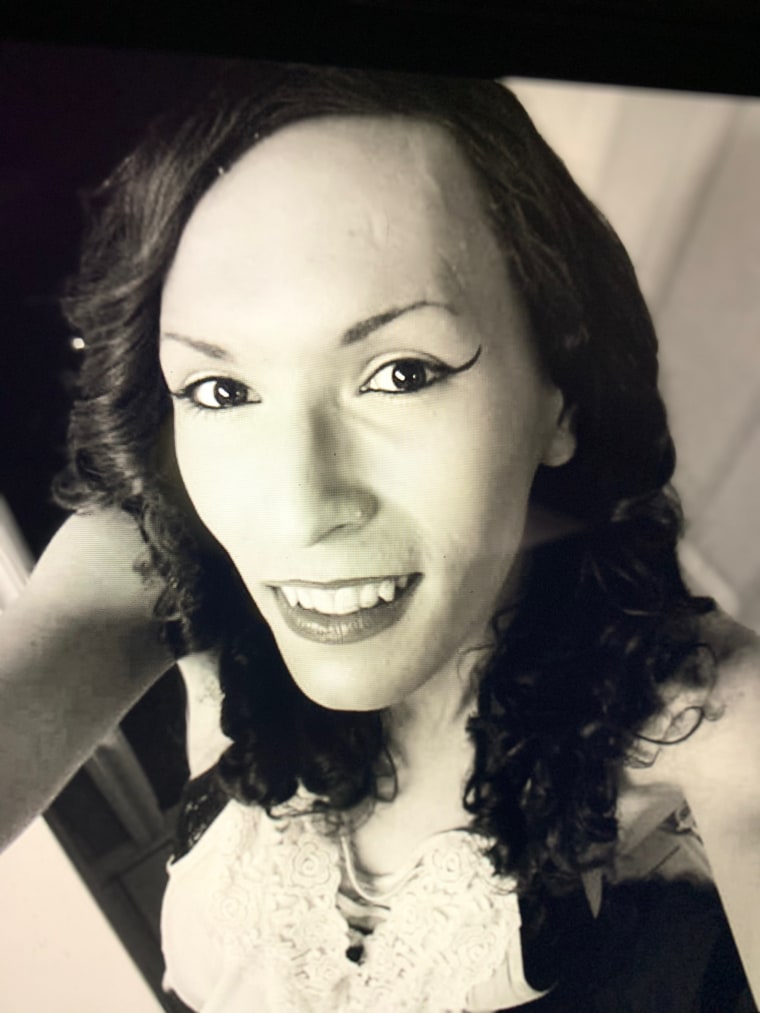
Pam and Christian say they're relieved that Marshal Buhl and his team are now in charge.
And the marshal has shared with us a slew of important developments in the investigation.
He tells us that the clothing found near that hole in the ground was not a match for Aubrey and that testing on the bloody sock is incomplete.
He says his team is actively looking at a particular pond, and he confirms they are also investigating whether Aubrey's ex-boyfriend or a hate group could be behind her disappearance.
And he shared with us news about another potential clue.
During a November 2019 search, volunteers discovered something on Aubrey's family's property.
Christian Fencer: “There was a search where we had, again, canine dogs that hit on the shed there at the property. And inside of the shed was a little blue kiddie pool and inside of the kiddie pool was a tarp. Well, we laid the tarp out and the kiddie pool out -- and they hit on the tarp again. So then we looked at the tarp and there was some stains on there that could coincide with blood. We had law enforcement come and pick it up. It took them about over a month to get it 60 miles down the road to get it tested.”
Marshall Buhl confirms that the tarp wasn't tested in a timely way.
He does say there's evidence suggesting a connection between the shed and Aubrey, but that investigating isn't going to be easy.
Marshal Buhl: “There's some belief that maybe Aubrey might have been there at the shed. The problem with anything on that property is I have to convince a judge to get me back on that property. We're not getting consent to go back on that property. And so I got to have enough to have a tribal judge look and go, ‘Yes, here. Get on that property and look.’”
In terms of potential suspects, Marshal Buhl says he's looking hardest at those closest to Aubrey.
Marshal Buhl: “People do bad things to people generally because they love them or they did love them or there's some type of relationship, you know? So I believe that if we find out that, heaven forbid, Aubrey was murdered, chances are it's gonna be a very, very close person that spent a lot of time with her. And that person knows where she is right now.”
He confirms his team has talked to Aubrey's immediate family members, but...
Marshal Buhl: “I can tell you, we have not interviewed every family member yet. There's a couple that we’re not interviewing on purpose yet.”
Again, Aubrey's mother didn't respond to our request for comment.
But in November 2021, she did speak to News Nation.
She said she had no idea what happened to her daughter, but that, at that point, she had come to believe that Aubrey was dead.
Jennifer Byrd on News Nation: “I felt my child pass a year ago. A mother and a child has a bond and I felt it. I hit the floor.”
Pam says she's much more optimistic now than before that they will learn what happened to Aubrey.
Andrea Canning: “Do you have any more hope now that it's with the FBI and the tribal police that it will get solved?
Pam Smith: “Absolutely.”
Andrea Canning: “That's good.”
Pam Smith: “I believe without a doubt that we're going to get answers.”
Marshal Buhl says getting those answers could depend on a tip -- any tip.
Marshal Buhl: “We're looking for any little thing. You know, just some offhand comment. ‘I've seen this car.’ ‘I heard this from a friend at a party.’ I mean, that's what we're looking for. We're looking for someone to come forward with what they think is the dumbest, worthless piece of information that they could ever give the police. That's what we want.”
If the marshal sounds deeply invested in Aubrey's case, maybe it's because he is. Like all Cherokee marshals, he's a member of the tribe.
Marshal Buhl: “Hopefully, we find a resolution before the -- the end of my career here and I move on. But I can promise you: When I'm holding my grand--. I have two little granddaughters. When I'm around them, when I'm 80 years old, she will be one of the cases I think about, whether we find her or not. She's important. She's important to me. So this is not a case that's going away any time soon. If somebody out there did something to Aubrey, don't sleep well. Because you have strong men and women out here that are motivated to find you.”
Whatever happens, Aubrey has left behind at least one legacy for her uncle Christian. Her pride in being Cherokee has inspired him to learn more about their shared heritage. And he says the tribe has been welcoming, inviting him to learn stickball -- a Native game similar to lacrosse -- as well as to take part in various ceremonies.
Christian Fencer: “Members of the Cherokee Nation have been phenomenal. They've come out and shown us support. They've introduced us to traditions that we didn't even know we had.”
Marshal Buhl wants us all to know something about what it means to be Cherokee.
Marshal Buhl: “The Cherokee Nation is a tribe of laws. We believe in the rule of law to a fine point. We do. We believe in the protection of civil liberties. Individual responsibility and individual freedom is huge at the Cherokee Nation.”
Individual freedom. Something Aubrey Dameron fought so hard for...
What happened to Aubrey? As the tribal police and FBI pursue leads, deploy dive teams and take in tips, her uncle Christian does his best to stay positive.
Christian Fencer: “Where is she? I lose hope, but at the same time I see stories of people being found after years of being missing, after months of being missing and I just, I hold on to hope that maybe -- maybe, just maybe, everything will fall into place someday and we'll get Aubrey back.”
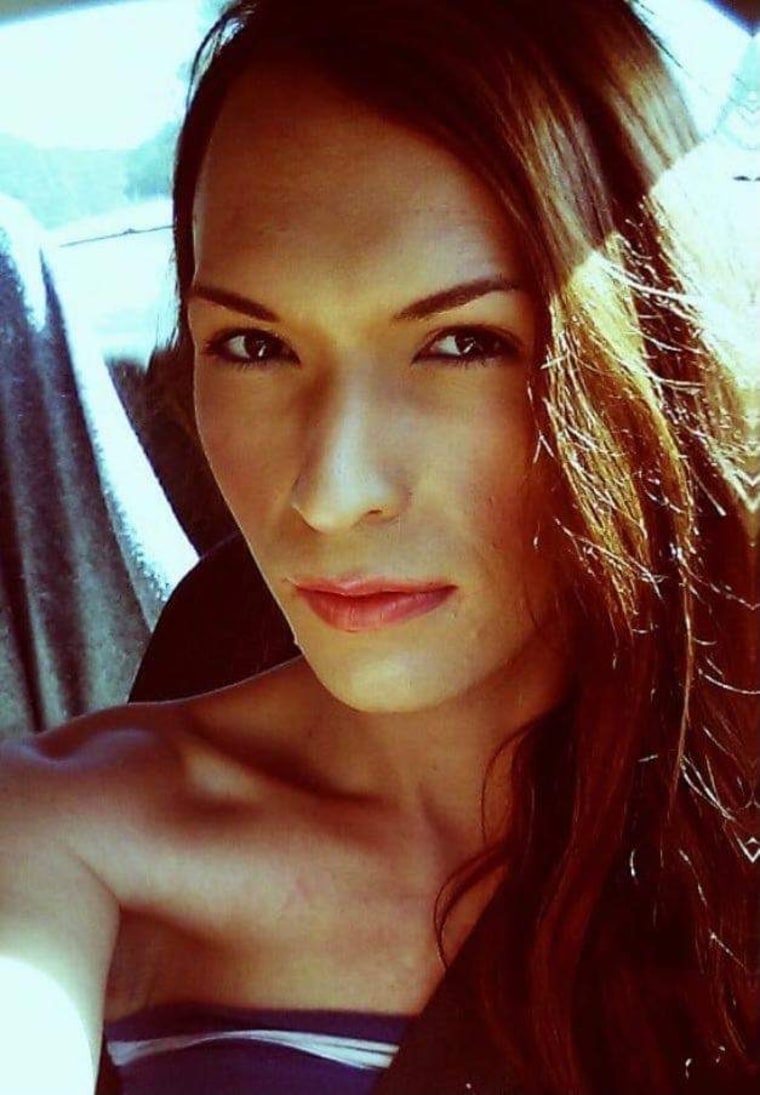
Aubrey Dameron is described as 5’9” and about 130 lbs. She has brown eyes, long brown hair and a triangle composed of interlaced arcs tattooed on her back and another tattoo reading “Shorty” on her upper left arm.
If you know something about Aubrey's disappearance, you can call the FBI at 1-800-CALL-FBI or go online at https://tips.fbi.gov/
You can also call the Cherokee Nation Marshal Service at 918-207-3800.
Thanks for listening. To see pictures of Aubrey and learn more about other people we've covered in our Missing in America series, go to DatelineMissingInAmerica.com. There, you'll be able to submit cases you think we should cover in the future.
